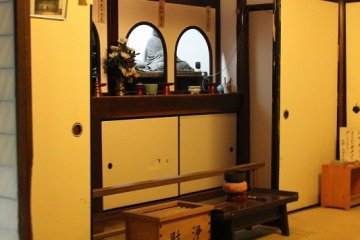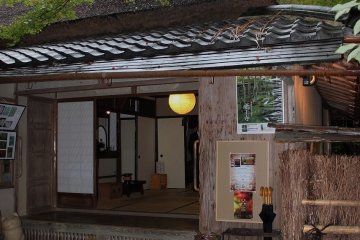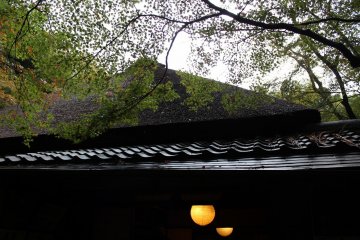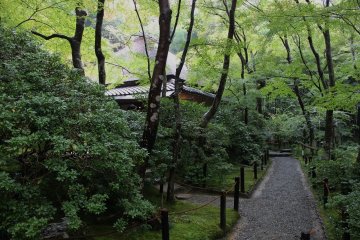This is the final chapter in a 4-part series of the story behind Gio-ji Temple. Continued from part 3...
The mother scooped up her two daughters and held them tight. Hysteric and shedding tears, she sobbed:
"Gio, I'm so sorry. I didn't consider your deeper feelings. Please forgive me. If my daughters are to throw away their lives, as your mother, I have no choice but to take my life as well. So would that not be one of the five heinous crimes (五逆罪)? I have no regrets in this world. This world is just temporary, right? Even still, if you kill yourself your life in the next world will head down a dark path. That makes me sad."
(*Translator's note: The five heinous crimes are five universal taboos in Buddhism. Committing such an act is to bring immediate disaster through karma. The crime Gio's mother is referring to is matricide--killing one's mother--although the mother is actually threatening to kill herself and blame it on Gio.)
"Mother, you are right. And if I stay in the capital, I am sure to cause more trouble. It is best I leave."
The 21 year old Gio cut her hair and became a nun in a small hermitage at Mt. Ogura. Then her sister Ginyo, 19 year olds joined her. The mother at 45, which before pledged suicide, instead cut her hair to become a nun as well. Chanting "Nembutsu" (the name of Amitabha Buddha in Pure Land Buddhism) until the rest of their days would be a satisfying life of peace and quiet.
The seasons changed and summer came. Around sunset during the Tanabata Festival, a muffled sound came from beyond the bamboo woven door of the hermitage. Opening the door, there in the pitch darkness, was Hotokegozen.
Hotokegozen said to the surprised Gio:
"Graceful and honorable Gio, although you have shown me great compassion, my actions have caused you much harm. Both of us suffered the sadness only a woman can and did not know how to act. We (back at the lord's residence) all know you were here so asked the master to send you clothes, but he did not listen. This world is over in a blink of an eye. The glamor of today's world is just a dream. Boasting in short-lived glory, it is sad to think we will soon be gone and these moments may not be in the life after. This morning, I came here in secret."
After speaking, Hotokegozen removed the hood she was wearing over her head. Her head was clean shaven like that of a nun. Gio took Hotokegozen's hand and led her inside.
"I understand your feelings. I do not hold the slightest grudge against you. You certainly must feel the same as I. At only the age of 17 you thought about following the Pure Land path of Buddha. Let's live together."
Gio and new sister nun Hotokegozen, along with two other nuns (Gio's sister and mother), lived in the hermitage (now Gio-ji Temple). In spring they enjoyed flower picking in the fields and hills: in autumn collecting nuts and mushrooms. It was a peaceful and happy life in Sagano. While the length of time each nun lived was different, they were all able to accomplish what they wanted to in life in the end.
Gio passed away In the second year of the Shouan era (1172) . After that Hotokegozen waited around for a long time at Gio's resting place. Then in the second year of Jishou era (1178) she left Kyoto to return to her hometown of Kaga. Two years later at the young age of 20, she passed away.
As of Taira no Kiyomori, his time spent with Gio in their previous passionate relationship will be the highlight of his life. Nine years after the passing of Gio, Kiyomori had a dream in which he suffered a fatal fever caused by the rival Genji clan. Not long after, with no signs of a fever at all, he suddenly collapsed and died. The time was the 5th year of Jishou (1181). That was the start of the decline of the Taira clan. Four years after the death of Kiyomori, the Taira battled at Yashima. They were defeated by the Genji clan in the Battle of Dan-no-ura. The Taira had been annihilated.
A small wooden statue of Gio-ji is enshrined in the main hall. Statues like this with black-colored eyes are works of the Kamakura period. The statue quietly stands, lost in thought. Unlike the Gio who lived during the late Heian period, this statue lives without the worry of disasters, such as famine or earthquakes. Nevertheless, a peaceful life in the woods of Mt. Ogura, a life separate of the capital, seems to offer the same sense of tranquility.









